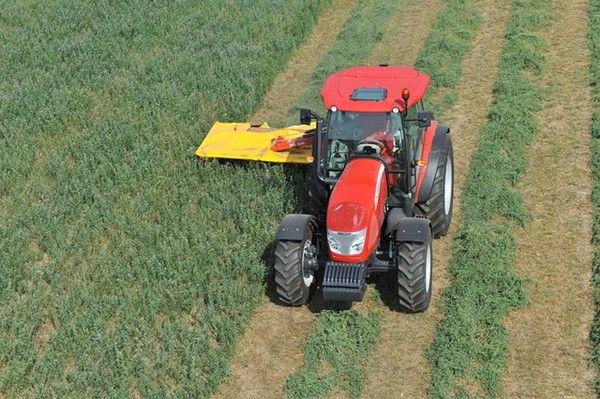
European agricultural machinery market takes a breather
Cema is predicting a European market slowdown in 2014 but refers to only a change of pace following on a strongly dynamic period over the past few years. Referring to the deep agricultural machinery market crisis in Italy however, the president of the manufacturers federation, Massimo Goldoni, underscores the risk of weakening the entire national agricultural system
“A pause for consideration” for the European agricultural machinery market coming out of a two strongly positive years and now appearing to take a breather in 2014 without straying too far however from the brilliant performance turned in in the recent months. This is what became evident in the Business Barometer put out monthly by Cema, the European Agricultural Machinery Industry association, featuring a business climate survey showing a decline of manufacturers’ confidence in the near and medium term. “Demand for farm equipment in Europe in 2014 remains strong, yet the overall mood is somewhat less positive than last year,” Cema said in a statement.
According to the August Business Barometer, the percentage of industries expecting a drop in sales over the coming six months has increased by eight points over the month of July, from 41% to 49%, while the number of companies which are currently experiencing a decline in business climbed by three points. The data released by the European industry association indicates that the market pause will turn into sales off by 5% and a downturn in orders estimated at 5% to 10%. Still on the side of expectations, only Spain and the United Kingdom, and Romania and the Scandinavian countries are moving against this trend to recover the losses of the recent past whereas other European markets are falling in line with the decline. This downturn is expected to be accentuated for the CIS states as the result, in part, of sanctions recently applied. The outlook of business people in the sector is for the negative trend to strike most seriously on machinery for working the soil, components and harvesting machinery; there are also forecasts for a decline in tractor sales. On the other hand, the expectations are brighter for livestock raising machinery and equipment seen to be growing in the majority of European enterprises.
Brakes applied in Germany and France, still no upturn for Italy. The agricultural machinery downturn in Europe in the first quarter of 2014, with a 4.6% decline in tractor registrations, was the result mainly of blocked registrations in Germany and France, the continent’s leading markets, as well as structural problems in Italy, Poland the Ukraine, showing substantial drops in agricultural machinery demand. Commenting on market dynamics in France, Elodie Dessart, economic analyst of the French manufacturers’ association AXEMA said: “In 2014, the French market could fall by up to 10% – but this contraction must be seen in the context of the two record-breaking years we have just experienced.” For his part, Gerd Wiesendorfer of the German association VDMA, affirmed, “At this stage, we expect a moderate 5% decline in the German market – a development which would still amount to EUR 5.4 billion of total sales in 2014.” Though the pause for Europe in general and especially for France and Germany in 2014 may appear normal and natural in the wake of substantial growth there are still no signs that Italy might be exiting the country’s worst ever crisis in the sector. The first quarter closed with a further decline in registrations. Compared to the same period of the previous year, not only were tractors off by 4.4%, down by 448 units, transporters fell 7.6% and trailers slumped 1.3% while combine harvesters plunged 29.4%, the only category which showed signs of recovery in 2013 with a gain of 13.9%.
In substance, Italy and the rest of Europe are moving at different speeds, as was pointed out by Massimo Goldoni, the president of the Italian Federation of Agricultural Machinery Manufacturers, FederUnacoma, who noted that these conditions are throwing the primary sector out of balance. “The Italian agricultural system is being weakened a lot compared to those in the main European countries and a recovery in investments in mechanization is one of the key factors for the competitiveness of our primary sector as well as for a full recovery in the mechanization sector,” he affirmed.
Change of the guard for CEMA leadership: Markwell new president
Richard Markwell, the past vice president and managing director of Massey Ferguson for Europe, Africa and the Middle East, is the new CEMA president. Richard Markwell takes the helm from Gilles Dryancour who has led the manufacturers association for the past five years. “The agricultural machinery sector in the Europe of today is a vigorous and dynamic reality,” the new president declared on taking office on June 18th in Brussels. Markwell went on to say, “My objective is to work so that our sector continues to assert itself and offer innovative solutions for farming around the entire world.” Among the projects singled out by the new president is close cooperation with European institutions for the definition of policies favoring industrial sectors and especially agricultural mechanization.








